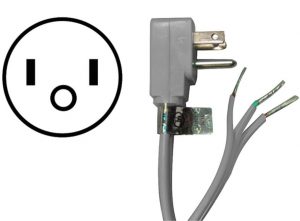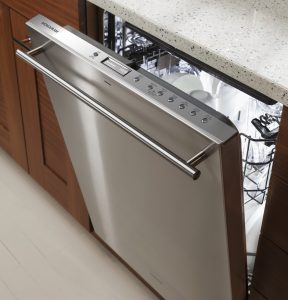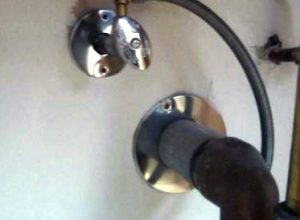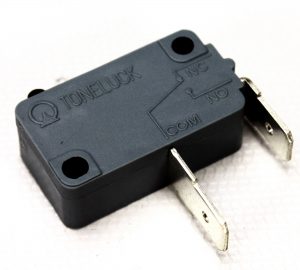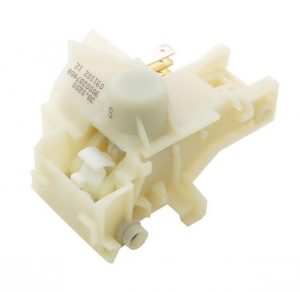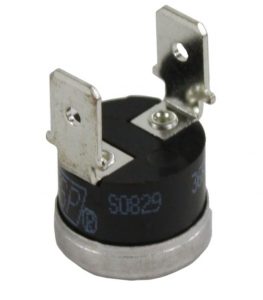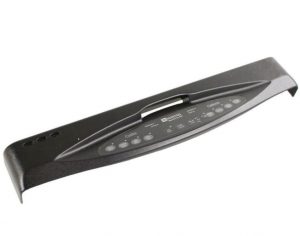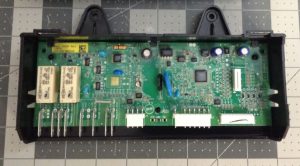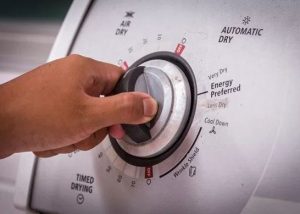Your dishwasher won’t start? Here’s how to fix it.
If your dishwasher won’t start and the control panel shows no signs of life, it can be frustrating as it means you have to wash the dishes by hand. Do not get upset! The problem could be resolved with a few quick and easy checks.
Follow these simple tips to get your dishwasher working properly again:
-
Check if it is getting power
If you have latched the door and engaged the control of your dishwasher but nothing lights up on the control panel, it might be the sign that the unit is not getting power. Check if the dishwasher is plugged in a receptacle. If the outlet of the dishwasher plugs into is a GFI outlet, make sure it has not tripped. Push a reset button on the GFI outlet if needed. You can also unplug the dishwasher and plug another appliance in to be sure the outlet is getting power. Then, check the electrical panel. If you find tripped circuit breaker or blown fuse, switch the breaker to OFF and then to ON mode or replace the fuse.
-
Check if the dishwasher door is closed
If the door is not properly closed, the dishwasher will not start.
-
Check if the water supply turned on to the dishwasher
Make sure the dishwasher water supply is turned on.
If your dishwasher still does not run and you may need assistance of a qualified technician, call us (818) 600-2559 to schedule an appointment.
There are things that might be causing the issue:
-
Broken door switch
If electrical power is available but the dishwasher still does not run, the problem can be in broken door switch. Door switch is a safety feature and it is located inside the door panel. Thanks to the door switch, dishwasher will not run when the door is open. To check if the door switch is broken, the control panel should be removed. locate the door switch, and test it for continuity.
-
Defective door latch
The dishwasher door must be properly latched for the appliance to run. However, a defective door latch assembly may prevent the dishwasher from running even with the door fully closed. For many latches, a multi-meter can be used to test the micro switch for continuity a continuous electrical path inside the switch. If the micro switch tests negative for continuity, the door latch is defective and should be replaced.
-
Blown thermal fuse
Some dishwasher models have a thermal fuse that may be located near the bottom of the tank, or on, or near the control board. The fuse will blow with the dishwasher overheats cutting off power to the appliance. Again, a multi-meter can be used to determine if the fuse has continuity. If not, the fuse has blown and should be replaced.
-
Damaged touchpad
If some of the touchpad buttons work but others do not, then the touchpad may be preventing the dishwasher from starting. You can try cleaning the ribbon connector to improve the connection, but the touchpad assembly may need to be replaced with a new one.
-
Faulty main control board
The main control board provides power to nearly every dishwasher component. A faulty control board may prevent the dishwasher from starting. While the board cannot be easily tested, you can inspect it for signs of burning or a shorted out component.
-
Faulty timer
The timer is typically located on the control panel of your dishwasher and controls the motor and the drain solenoid. If your dishwasher does not start, the timer may have failed and should be replaced. To conduct this type of repair it is best to call an appliance service person.
According to one study, using a dishwasher is quicker, more cost-effective and uses less water than washing up. Therefore, if your washer is not working properly, do not hesitate to contact us (818) 600-2559. We will sent our professional technician and he will do his best to repair your dishwasher at the soonest possible time.

